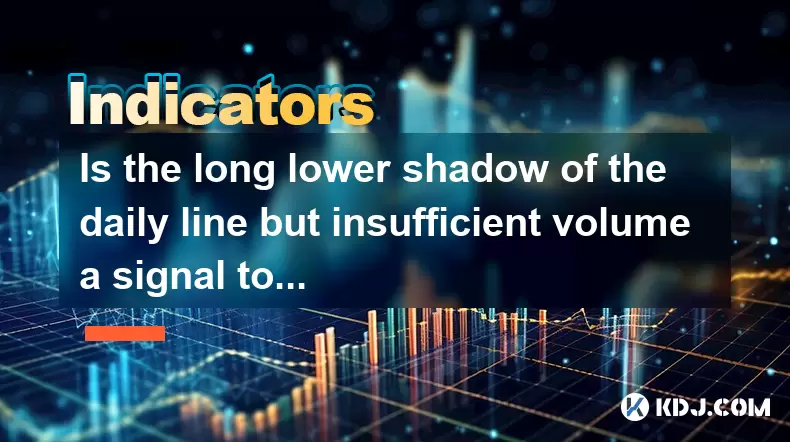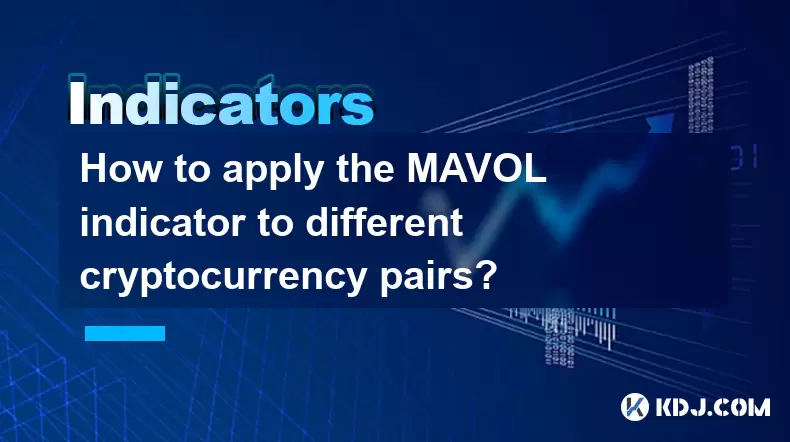-
 Bitcoin
Bitcoin $118400
0.47% -
 Ethereum
Ethereum $3836
2.20% -
 XRP
XRP $3.157
2.98% -
 Tether USDt
Tether USDt $0.9999
-0.03% -
 BNB
BNB $801.5
1.31% -
 Solana
Solana $180.9
2.07% -
 USDC
USDC $0.9999
-0.02% -
 Dogecoin
Dogecoin $0.2225
2.50% -
 TRON
TRON $0.3285
-1.02% -
 Cardano
Cardano $0.7789
2.60% -
 Hyperliquid
Hyperliquid $43.60
2.39% -
 Sui
Sui $3.892
4.41% -
 Stellar
Stellar $0.4229
3.34% -
 Chainlink
Chainlink $18.01
3.98% -
 Hedera
Hedera $0.2745
6.77% -
 Bitcoin Cash
Bitcoin Cash $582.3
3.38% -
 Avalanche
Avalanche $23.77
1.04% -
 Ethena USDe
Ethena USDe $1.001
0.01% -
 Toncoin
Toncoin $3.493
3.59% -
 Litecoin
Litecoin $110.0
2.48% -
 UNUS SED LEO
UNUS SED LEO $8.936
-0.37% -
 Shiba Inu
Shiba Inu $0.00001304
2.49% -
 Uniswap
Uniswap $9.999
1.09% -
 Polkadot
Polkadot $3.897
3.26% -
 Monero
Monero $308.6
-0.83% -
 Dai
Dai $0.9999
-0.01% -
 Bitget Token
Bitget Token $4.504
-0.04% -
 Pepe
Pepe $0.00001154
2.95% -
 Cronos
Cronos $0.1471
3.06% -
 Ethena
Ethena $0.6691
19.53%
Is the long lower shadow of the daily line but insufficient volume a signal to stop falling?
A long lower shadow in crypto candlesticks may signal temporary buying pressure, but without strong volume or trend confirmation, it often fails to reverse downtrends.
Jun 21, 2025 at 12:08 pm

Understanding the Long Lower Shadow in Daily Candlesticks
In technical analysis, the long lower shadow of a daily candlestick is often interpreted as a potential sign of price rejection at lower levels. This pattern indicates that sellers attempted to push the price down during the trading period but were met with buying pressure strong enough to pull the price back up toward the closing level. In the context of cryptocurrency markets, which are known for high volatility and rapid sentiment shifts, this pattern can appear frequently.
However, a long lower shadow alone does not guarantee a reversal or a halt in the downtrend. It must be analyzed alongside other indicators and market conditions. The key point lies in whether the buying pressure represented by the long lower shadow is sustained over subsequent periods or if it's merely a temporary bounce within an ongoing bearish trend.
Important:
A long lower shadow should not be viewed in isolation. It gains significance when combined with volume, moving averages, and broader market sentiment.The Role of Volume in Confirming Price Action
Volume plays a crucial role in confirming the strength behind any candlestick pattern. When a daily candle forms with a long lower shadow but is accompanied by low trading volume, it suggests that the buying interest may not be strong enough to reverse the prevailing trend.
In cryptocurrency trading, where liquidity can vary significantly between assets, low volume during a supposed bullish signal like a long lower shadow could indicate lack of conviction among buyers. This makes the pattern less reliable as a standalone indicator of a bottom or a reversal.
Traders often look for volume confirmation—a surge in volume during or after the formation of the long lower shadow—to support the idea that institutional or large retail players are stepping in to absorb the selling pressure.
Analyzing Historical Patterns in Cryptocurrency Markets
Historically, cryptocurrencies have exhibited patterns where long lower shadows appeared during steep declines, only for the price to continue falling afterward. For example, during the 2018 bear market and parts of the 2022 crypto crash, many coins formed candles with extended lower wicks but continued their downward trajectory due to persistent negative sentiment.
In such cases, the appearance of a long lower shadow did not signify a stop to the fall. Instead, it was often followed by more downside movement as fear and uncertainty dominated the market.
To analyze this properly, traders should:
- Compare current patterns with historical data
- Look for repeated behavior around similar candlestick formations
- Assess how the broader market reacted during analogous phases
This type of historical review helps avoid false positives and provides better context for interpreting candlestick signals in real-time.
Combining Technical Indicators for Better Accuracy
Relying solely on candlestick patterns like the long lower shadow is risky, especially in volatile crypto markets. Traders often combine these observations with other technical tools to increase accuracy.
Some effective combinations include:
- Using moving averages (MA) to determine whether the price is above or below key trend lines
- Applying Relative Strength Index (RSI) to check for oversold conditions that might suggest exhaustion in selling pressure
- Watching for support and resistance levels that align with the location of the long lower shadow
For instance, if a long lower shadow appears near a significant support level and RSI is in oversold territory, it increases the likelihood that the price may stabilize or rebound.
However, even with these additional layers, the absence of strong volume weakens the reliability of the signal. Therefore, traders should remain cautious and consider using tight stop-loss orders when acting on such setups.
Practical Steps for Evaluating the Pattern
When encountering a daily candle with a long lower shadow and insufficient volume, follow these steps to assess its implications:
- Confirm the trend: Determine whether the asset is in a clear downtrend. If so, the long lower shadow may just be a retracement rather than a reversal.
- Check volume levels: Compare the volume of the candle with the average volume over the past 10–20 days. If volume is below average, caution is warranted.
- Observe following candles: Wait for the next few candles to see if there’s a continuation of buying pressure or if the price resumes its decline.
- Analyze surrounding support/resistance: See if the shadow touches a known support zone or Fibonacci level. Confluence with other factors increases the validity of the signal.
- Use order flow tools: Where available, examine order books or on-chain metrics to gauge whether large players are entering at those levels.
By systematically analyzing each aspect, traders can make more informed decisions instead of relying on isolated candlestick signals.
Frequently Asked Questions
Q: Can a long lower shadow ever be a strong reversal signal without high volume?
While rare, some short-term reversals can occur without significant volume, particularly in illiquid or altcoin markets. However, such moves often lack sustainability unless followed by increasing participation in the subsequent sessions.
Q: Should I place a buy order immediately after seeing a long lower shadow?
It's generally not advisable to act immediately. Wait for confirmation through subsequent price action or volume pickup before entering a position based on this pattern.
Q: How does this pattern differ from a hammer candlestick?
A hammer is a specific bullish reversal pattern that features a long lower shadow and a small body near the top of the candle. While both look similar, a hammer typically appears at the end of a downtrend and carries stronger reversal implications when confirmed by volume and context.
Q: What timeframes should I monitor along with the daily chart?
It’s useful to cross-check with higher timeframes like the weekly chart to understand the broader trend, and lower timeframes like the 4-hour or 1-hour for entry timing and confirmation.
Disclaimer:info@kdj.com
The information provided is not trading advice. kdj.com does not assume any responsibility for any investments made based on the information provided in this article. Cryptocurrencies are highly volatile and it is highly recommended that you invest with caution after thorough research!
If you believe that the content used on this website infringes your copyright, please contact us immediately (info@kdj.com) and we will delete it promptly.
- SEC, Crypto, and On-Chain: Navigating the Regulatory Maze
- 2025-08-01 02:31:40
- Bitcoin Bullish Market: How Long Positions are Boosting the Crypto King
- 2025-08-01 02:35:33
- Visa, Stellar, and Stablecoins: A New York Minute on the Future of Finance
- 2025-08-01 01:50:50
- BCH, FET, BlockDAG: Decoding the Crypto Buzz
- 2025-08-01 01:16:37
- Conflux Token, Crypto Simplicity, and WeWake Finance: A New Era?
- 2025-08-01 01:50:50
- Dogecoin, Remittix, and Analyst Targets: Navigating the Crypto Landscape
- 2025-08-01 01:55:40
Related knowledge

What does it signify when the MACD crosses below the zero line?
Aug 01,2025 at 01:43am
Understanding the MACD IndicatorThe Moving Average Convergence Divergence (MACD) is one of the most widely used technical analysis tools in the crypto...

How does the MACD histogram show momentum?
Aug 01,2025 at 01:16am
Understanding the MACD Histogram and Its Role in Cryptocurrency TradingThe MACD histogram is a visual representation of the difference between the MAC...

What is a MACD crossover?
Jul 31,2025 at 11:52pm
Understanding the Role of Private Keys in Cryptocurrency SecurityIn the world of cryptocurrency, private keys are the cornerstone of ownership and con...

How can you use the MACD histogram to determine trend strength?
Jul 31,2025 at 11:10pm
Understanding the MACD Histogram and Its ComponentsThe MACD (Moving Average Convergence Divergence) histogram is a visual representation of the differ...

What is the impact of different moving average types (SMA vs. EMA) on the MAVOL indicator?
Aug 01,2025 at 02:31am
Understanding the MAVOL Indicator in Cryptocurrency AnalysisThe MAVOL (Moving Average Volume) indicator is a technical analysis tool used in the crypt...

How to apply the MAVOL indicator to different cryptocurrency pairs?
Aug 01,2025 at 12:43am
Understanding the MAVOL Indicator in Cryptocurrency TradingThe MAVOL indicator, short for Moving Average Volume, is a technical analysis tool that app...

What does it signify when the MACD crosses below the zero line?
Aug 01,2025 at 01:43am
Understanding the MACD IndicatorThe Moving Average Convergence Divergence (MACD) is one of the most widely used technical analysis tools in the crypto...

How does the MACD histogram show momentum?
Aug 01,2025 at 01:16am
Understanding the MACD Histogram and Its Role in Cryptocurrency TradingThe MACD histogram is a visual representation of the difference between the MAC...

What is a MACD crossover?
Jul 31,2025 at 11:52pm
Understanding the Role of Private Keys in Cryptocurrency SecurityIn the world of cryptocurrency, private keys are the cornerstone of ownership and con...

How can you use the MACD histogram to determine trend strength?
Jul 31,2025 at 11:10pm
Understanding the MACD Histogram and Its ComponentsThe MACD (Moving Average Convergence Divergence) histogram is a visual representation of the differ...

What is the impact of different moving average types (SMA vs. EMA) on the MAVOL indicator?
Aug 01,2025 at 02:31am
Understanding the MAVOL Indicator in Cryptocurrency AnalysisThe MAVOL (Moving Average Volume) indicator is a technical analysis tool used in the crypt...

How to apply the MAVOL indicator to different cryptocurrency pairs?
Aug 01,2025 at 12:43am
Understanding the MAVOL Indicator in Cryptocurrency TradingThe MAVOL indicator, short for Moving Average Volume, is a technical analysis tool that app...
See all articles

























































































